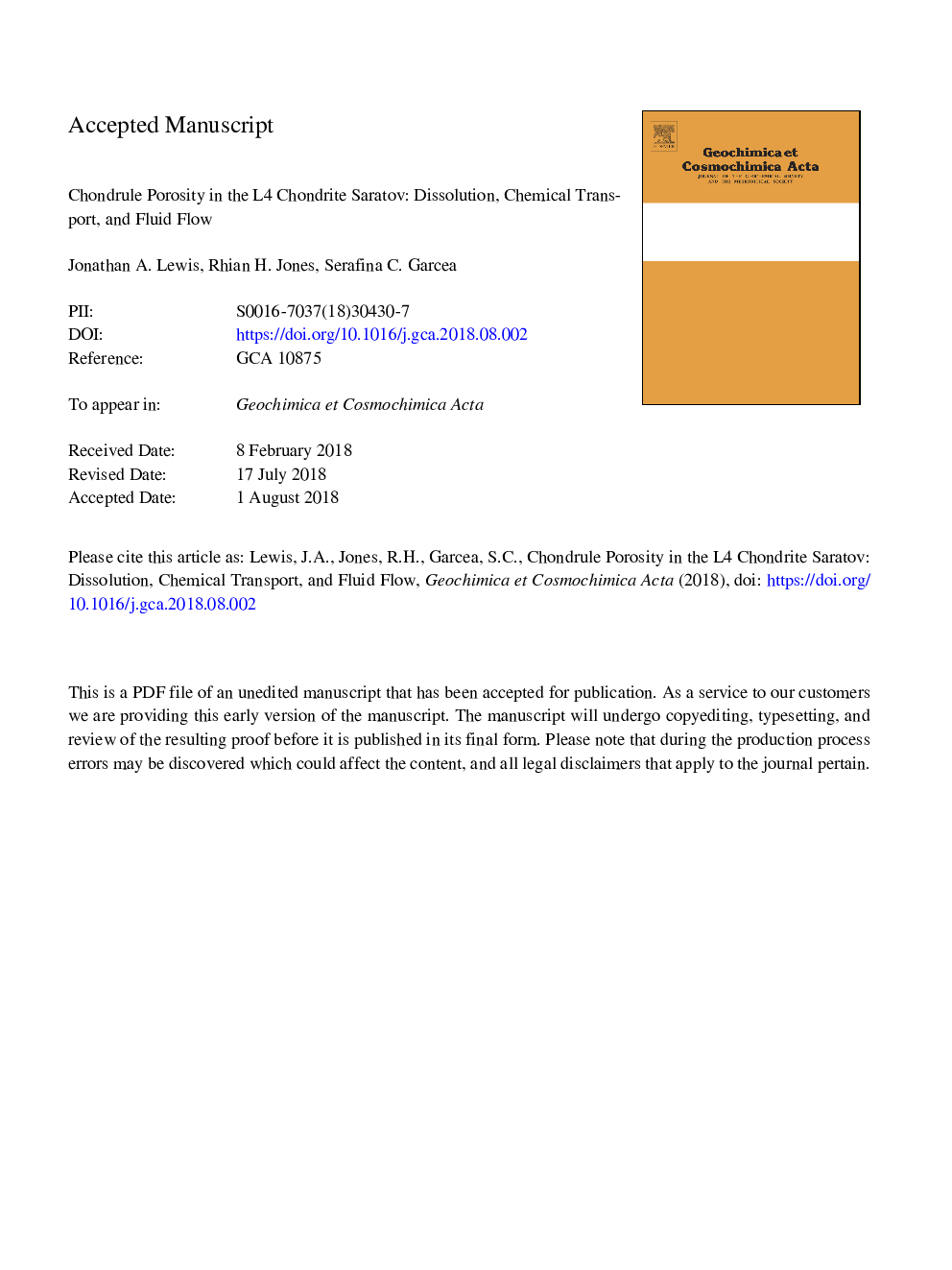| Article ID | Journal | Published Year | Pages | File Type |
|---|---|---|---|---|
| 10144980 | Geochimica et Cosmochimica Acta | 2018 | 33 Pages |
Abstract
Porosity is an important physical property of meteorites and asteroids that affects density, material strength, and thermal conductivity. Porosity can also promote chemical exchange by facilitating the transport of fluids and dissolved ions. We measured the porosity of individual chondrules from the L4 ordinary chondrite Saratov, using X-ray microtomography (μCT) and scanning electron microscopy, to examine the abundance and distribution of porosity in chondrules, and to understand how porosity relates to chemical exchange during parent body processes. Porosity was 1-2% by volume in the chondrules we measured and maximum pore sizes were â¼300â¯Î¼m. Porosity distribution and morphology indicate that porosity is a secondary feature and most pores >1â¯Î¼m were formed from the dissolution of chondrule mesostasis glass. Fe and K are preferentially enriched in phases adjacent to the most porous regions: Fe is enriched in pyroxene, and K is enriched in mesostasis where it is observed as either the silica alteration phase merrihueite, or fine-scale, K-feldspar exsolution in albitic feldspar. Some pores can be described as vugs, as they contain euhedral olivine and chromite, with textures indicating vapor deposition. Knowing the chondrule porosity, we estimate the matrix porosity in Saratov to be very high, 40-60%. We suggest that during prograde metamorphism, an aqueous fluid originating from the matrix dissolved chondrule mesostasis glass, producing the observed porosity, and introducing Fe into the pyroxene phenocrysts. Fluids were less abundant through peak metamorphism, and chondrule mesostasis glass crystallized to fine-grained albite. During retrograde metamorphism, high temperature, short duration bursts of a dry, alkali-bearing fluid from the asteroid interior infiltrated the pore network, formed the vug phases, altered silica to merrihueite, and introduced K to the secondary albite. Fine-scale K-feldspar then exsolved from albite during rapid cooling to the ambient temperature. Overall, development of porosity during metamorphism on the L chondrite parent body contributed to the chemical evolution of ordinary chondrite material, as well as affecting physical properties of the parent asteroid.
Keywords
Related Topics
Physical Sciences and Engineering
Earth and Planetary Sciences
Geochemistry and Petrology
Authors
Jonathan A. Lewis, Rhian H. Jones, Serafina C. Garcea,
